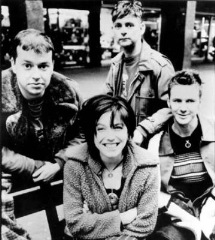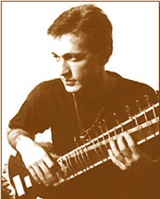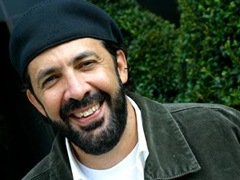 Between African and European music there is a gap that not only consists of the compositional style and instrumentation, but which goes as deep as the attitude towards the individual in society. While in European music there’s a tendency to make the unique style of a performer to stand out of the band or orchestra, in traditional African music it is often the sound of the band as a whole what is important. Kevin Volans, in a highly recommended article in 1986, put it succinctly:
Between African and European music there is a gap that not only consists of the compositional style and instrumentation, but which goes as deep as the attitude towards the individual in society. While in European music there’s a tendency to make the unique style of a performer to stand out of the band or orchestra, in traditional African music it is often the sound of the band as a whole what is important. Kevin Volans, in a highly recommended article in 1986, put it succinctly:
We as Westerners admire much more the man who can do the work of ten men, than ten men working as one.
Kevin Volans, born in South Africa in 1941, studied music in Johannesburg and, thereafter, made post-graduate studies with Karlheinz Stockhausen in the UK. In the early 80’s, rejecting the Apartheid, a system of racial segregation enforced by the South African government until 1994, Volans started an exploration of diverse African compositional techniques, as applied to Western music. Volans himself explains his motivations:
I wanted to reflect in the music an image of a multicultural society - one in which the traditions of different cultures are represented, honoured and, above all, shared - no more 'separate development'!
“Mbira” was the first of this series of works. It was composed for two harpsichords re-tuned in African tuning, and a rattle. This work gets its name from the Mbira, a traditional instrument from Zimbabwe, which is central to a music genre with the same name. In the first part of this work, Volans emulates the Mbira music patterns with the harpsichords. The coda, however, follows a non-traditional style.
In 1982, Kevin Volans composed one of his best known works, titled “White Man Sleeps”. It was originally written for two harpsichords, viola da gamba and percussion, but in 1986, at the request of the Kronos Quartet, it was re-worked for string quartet. The innovative character of this work is captured in the following excerpt from Volans’ own exposition:
It was a bit like introducing an African computer virus into the heart of Western contemporary music. Thus I concentrated on the anti-hierarchic nature of traditional African music, the interlocking techniques, shifting downbeats, the largely non-functional harmony, the open forms, the extremely fast tempi of some music, the non-developmental use of repetition, contrasting and irregular patterning, the tone colour, the energy and the joy.
Let’s listen to the second movement. The other movements are available as well.
 This post is about two Sri Lankan artists, Samitha Mudunkotuwa and Iraj, who despite being from different generations and styles, have got together to create a couple of great songs.
This post is about two Sri Lankan artists, Samitha Mudunkotuwa and Iraj, who despite being from different generations and styles, have got together to create a couple of great songs. 







 Sepultura
Sepultura

















